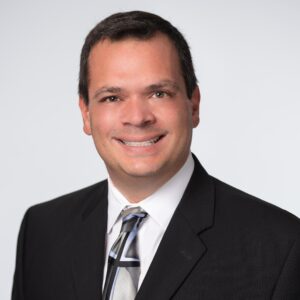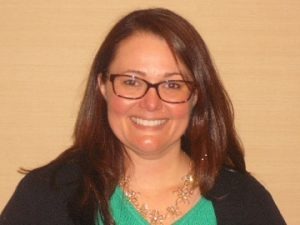Survey Survival
Long-term care facilities are not strangers to regulation 483.25(h) Accidents as it historically represents and continues to make the Centers for Medicaid & Medicare Services’ (CMS) worst dressed list of top ten most frequently cited deficiencies year after year. In addition, F-tag 323 often achieves a top five ranking in most cited actual harm with immediate jeopardy violations. So, it was not a surprise that CMS chose to make revisions and that the revisions were vast.
The revisions include additional regulatory language, intent, definitions, an overview, system approach guidelines, example scenarios that include resident smoking and resident-to-resident altercation, investigative protocol, and determination of compliance directives.
Add-on regulatory language. The facility must ensure that (1) the resident environment remains as free from accident hazards as is possible and that (2) each resident receives adequate supervision and assistance devices to prevent accidents.
Survey survival considerations. Legal argument and debate can be made as to what is an accident hazard in an LTC environment as well as whether it was possible to keep a specific LTC environment free of an accident hazard or that a specific resident received “adequate” supervision or assistance devices to prevent accidents. I do not believe in giving a potential accident deficiency unless an exhaustive effort was conducted to prove the facility had good intentions, keeping the individual resident and facility’s uniqueness in mind. For example, the facility may have built-in preventions such as nonskid flooring, safe wandering paths, and so on, but the individual resident’s daily routines and habits (such as afternoon wandering) may provide a direct link as to why an accident occurred. Keeping these factors in mind will assist in proving the facility tried to ensure a hazard-free environment.
Intent. There are four functions of the intent language:
Identifying hazard(s) and risk(s)
Evaluating and analyzing hazard(s) and risk(s)
Implementing interventions to reduce hazard(s) and risk(s)
Monitoring for effectiveness and modifying interventions when necessary.
Good news can be found in the F323 document’s wording “over which the facility has control.” It provides wiggle room when designing a systems policy and procedures.
Four Focal Points for Policy and Procedure Development
The facility must show how it is ensuring an environment free from accident hazards.
Methods of providing supervision in an effort to prevent accidents.
Identify and implement thorough assessment for those residents who need assistive devices to prevent avoidable accidents.
A quality assurance program that identifies, evaluates, analyzes, and assists in the reduction of hazards and risks that proves to be effective and allows for modification as needed.
The Regulatory Overview
The facility’s commitment to safety along with other remarkable interpretive language is found in the regulatory overview portion of F323. It hints towards staff education expectations where accidents and safety are concerned, along with the facility’s ultimate responsibility for accountability and its role in risk identification and accident prevention.
A Successful Accident Avoidance System
When designing a long-term care system where the probability of serious or immediate danger may be present, acknowledgment of these risks is paramount. This includes facility and staff limitations. Traditionally a comprehensive long-term care system contains the following items:
standards of care
policy and procedures
forms, tools, and equipment
financial allocation of necessary funds
outlined and assigned staff accountabilities and responsibilities
education and training modules that include competency assurance
quality assurance mechanism
Today’s rewrite of F323 Accidents requires items to be added to the accident avoidance systems found in long-term care. Include Life Safety Code items on the hazards of resident smoking as well as the inclusion of the definition of “willful” found in F-223 Abuse regarding resident-to-resident altercations to provide necessary substance to one’s own unique facility system needs. Matters needing enhanced consideration can include specialized units, multilevel structures, environmental age, and décor. However, each facility is unique in its design, décor, resident population, and so on, therefore, only an independent nonbiased facility analysis can pinpoint specific additional accident system needs.
Resident Accident Risk Assessment
Occasionally, it’s advisable to add a new piece of paper to assist in a comprehensive resident assessment–an accident risk assessment may be one of them. Of the thousands of medical record reviews I’ve conducted through the years routine assessments identifying resident risks and vulnerabilities has been virtually nonexistent. Consequently, many identifiable and potentially preventable accidents have occurred and resulted in a noncompliance situation for facilities and injury to their charges. This is an opportunity to improve. To do so, the assessment must take place and include dictated regulatory topics and items (see pages 240-247 of the SOM, Risk and Environmental Hazard).
Survey Survival Summary
F323 continues to be a serious citation. Investigative protocols and determination of compliance take on the same format and elements found in previously released SOM editions and continues with its same levels of harm and severity but with level one severity deemed “not applicable” in noncompliant situations. In brief, if a citation is found and written in F323, it is going to result in a level 2, 3, or 4 due to the severity of harm the accident has caused the resident.
Reta A. Underwood, ADC, is President of Consultants for long Term Care, Inc., Louisville, Kentucky.
For more information, phone (877) 987-2001 or visit https://www.cltcinc.com. To send your comments to the author and editors, please e-mail underwood1107@nursinghomesmagazine.com.
Sidebar
Definitions Applicable to F323
The following definitions should become intricately stitched and woven into the facility’s accident avoidance system. Refer to Section 483.25(h) Accidents in the SOM for complete information. A facility may also want to consider defining other key terms and approaches that are to be used as part of the system’s policy and procedures.
“Accident” refers to any unexpected or unintentional incident, which may result in injury or illness to a resident. This does not include adverse outcomes that are a direct consequence of treatment or care that is provided in accordance with current standards of practice (e.g., drug side effects or reaction).
“Assistance Device” or “Assistive Device” refers to any item (e.g., fixtures such as handrails, grab bars, and devices/equipment such as transfer lifts, canes, and wheelchairs, etc.) that is used by, or in the care of a resident to promote, supplement, or enhance the resident’s function and/or safety.
“Environment” refers to the resident environment. (See definition for “resident environment.”)
“Fall” refers to unintentionally coming to rest on the ground, floor, or other lower level, but not as a result of an overwhelming external force (e.g., resident pushes another resident). An episode where a resident lost his/her balance and would have fallen, if not for staff intervention, is considered a fall. A fall withoutinjury is still a fall. Unless there is evidence suggesting otherwise, when a resident is found on the floor, a fall is considered to have occurred.
“Hazards” refer to elements of the resident environment that have the potential to cause injury or illness.
“Resident environment” includes the physical surroundings to which the resident has access (e.g., room, unit, common use areas, and facility grounds, etc.).
“Risk” refers to any external factor or characteristic of an individual resident that influences the likelihood of an accident.
“Supervision/Adequate Supervision” refers to an intervention and means of mitigating the risk of an accident. Facilities are obligated to provide adequate supervision to prevent accidents. Adequate supervision is defined by the type and frequency of supervision, based on the individual resident’s assessed needs and identified hazards in the resident environment. Adequate supervision may vary from resident to resident and from time to time for the same resident.
I Advance Senior Care is the industry-leading source for practical, in-depth, business-building, and resident care information for owners, executives, administrators, and directors of nursing at assisted living communities, skilled nursing facilities, post-acute facilities, and continuing care retirement communities. The I Advance Senior Care editorial team and industry experts provide market analysis, strategic direction, policy commentary, clinical best-practices, business management, and technology breakthroughs.
I Advance Senior Care is part of the Institute for the Advancement of Senior Care and published by Plain-English Health Care.
Related Articles
Topics: Articles , Regulatory Compliance , Risk Management









